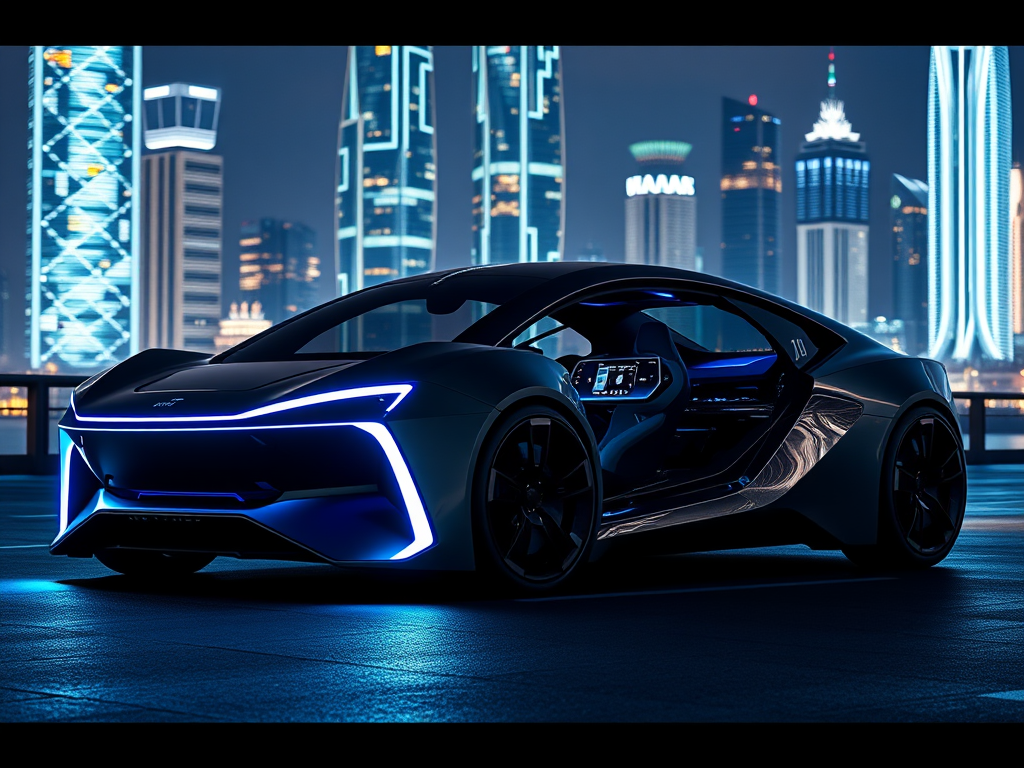Is Faraday Future the Next Tesla? Here’s What You Need to Know
Faraday Future has been making headlines in the electric vehicle (EV) industry, often drawing comparisons to Tesla. With its ambitious vision, cutting-edge technology, and financial challenges, Faraday Future has intrigued investors, automotive enthusiasts, and tech lovers alike. But can this emerging EV company truly compete with Tesla, the undisputed leader in the sector? In this article, we will explore Faraday Future’s journey, technological innovations, financial standing, and future prospects to determine if it has what it takes to rival Tesla.
The Origins of Faraday Future
Faraday Future (FF) was founded in 2014 by Chinese businessman Jia Yueting. His vision was to create a revolutionary electric vehicle company that would redefine mobility through artificial intelligence (AI) and innovative design. The company quickly gained traction and attracted attention due to its ambitious claims and futuristic prototypes. However, financial struggles and leadership challenges have often overshadowed its progress.
Tesla, founded in 2003 by Martin Eberhard and Marc Tarpenning and later led to success by Elon Musk, had similar humble beginnings but managed to overcome significant hurdles. Can Faraday Future follow in Tesla’s footsteps?
Faraday Future’s Technological Innovations
One of the key areas where Faraday Future aims to differentiate itself is in technology. The company has introduced several innovative features that could set it apart in the EV market:
- Variable Platform Architecture (VPA): FF’s modular electric platform allows for a wide range of vehicle designs, offering flexibility and cost efficiency.
- FF 91: The Flagship Model: Faraday Future’s flagship model, the FF 91, boasts a range of 381 miles per charge, a 1,050-horsepower engine, and a 0-60 mph time of just 2.4 seconds.
- AI-Driven User Experience: FF vehicles incorporate AI-powered features, such as intelligent personalization, advanced driver-assist systems, and voice-controlled interactions.
- Ultra-Fast Charging: The FF 91 features a high-capacity battery capable of charging to 50% in just 4.5 minutes using a 500 kW charging system.
While these innovations sound promising, Tesla has already established itself as a leader in battery technology, autonomous driving, and energy efficiency. The real question is whether Faraday Future can scale its technology and make it widely available.
Financial Struggles and Challenges
Despite its ambitious goals, Faraday Future has faced numerous financial hurdles. The company has dealt with:
- Funding Issues: Initial funding came from Jia Yueting, but his financial troubles forced him to file for bankruptcy, leaving the company in a difficult position.
- Production Delays: The FF 91 was first unveiled in 2017, but production has been repeatedly delayed due to cash flow problems.
- Investor Concerns: The company has sought external investments from multiple sources, including a SPAC (Special Purpose Acquisition Company) merger, but skepticism remains regarding its ability to mass-produce vehicles.
Tesla also faced financial difficulties in its early years, but it successfully turned things around through strategic investments, strong leadership, and growing consumer demand. Can Faraday Future do the same?
Market Position and Competitors
Tesla has already established itself as the dominant player in the EV market, with models like the Model S, Model 3, Model X, and Model Y consistently achieving high sales figures. Other competitors, including Rivian, Lucid Motors, and traditional automakers like Ford and General Motors, are also aggressively entering the EV space.
Faraday Future, on the other hand, is still struggling to bring its first mass-produced vehicle to market. While the FF 91 offers impressive specs, it is targeting the luxury segment, where competition is fierce with brands like Lucid Air and Mercedes-Benz EQS.
Consumer Reception and Brand Perception
Public perception plays a critical role in the success of an automotive company. Tesla has built a strong reputation through:
- A Dedicated Fan Base: Tesla owners and enthusiasts actively promote the brand.
- Consistent Innovation: Features like over-the-air updates and self-driving capabilities keep consumers engaged.
- Strong Leadership: Elon Musk’s high-profile persona adds credibility and excitement to the brand.
Faraday Future, on the other hand, has struggled with brand trust due to its financial instability, leadership changes, and repeated production delays. For FF to gain traction, it needs to deliver on its promises and establish itself as a reliable player in the EV space.
Production Capabilities and Manufacturing Strategy
Tesla has a well-established manufacturing ecosystem with Gigafactories around the world, enabling mass production and cost efficiencies.
Faraday Future initially planned to build a $1 billion factory in Nevada, but financial issues halted those plans. Instead, it has opted for contract manufacturing, which could limit its ability to scale efficiently. Without a solid manufacturing strategy, it will be difficult for FF to compete with Tesla’s production volume.
Future Prospects: Can Faraday Future Survive and Thrive?
Faraday Future still has potential, but its success hinges on several key factors:
- Securing Reliable Funding: Without stable financial backing, large-scale production remains uncertain.
- Delivering Vehicles to Market: If FF can finally roll out the FF 91, it may regain consumer and investor confidence.
- Expanding Its Product Line: To compete with Tesla, FF needs to offer a broader range of affordable vehicles.
- Building Brand Trust: Overcoming past setbacks and proving reliability will be essential.
Conclusion: The Verdict on Faraday Future
While Faraday Future presents an exciting vision for the future of EVs, it is still far from being the next Tesla. Tesla’s success came from a combination of technological breakthroughs, mass production capabilities, and strong consumer trust.
Faraday Future has promising technology, but it must overcome financial instability, delayed production, and intense market competition. If the company can navigate these challenges successfully, it may carve out a niche in the EV industry. However, surpassing Tesla remains an uphill battle.
The coming years will be crucial for Faraday Future. Will it rise to the occasion and become a serious Tesla competitor, or will it fade into obscurity? Only time will tell.
Read Also Our This Post: Swiffer Power Mop Review: Is This the Best Mopping Solution?


